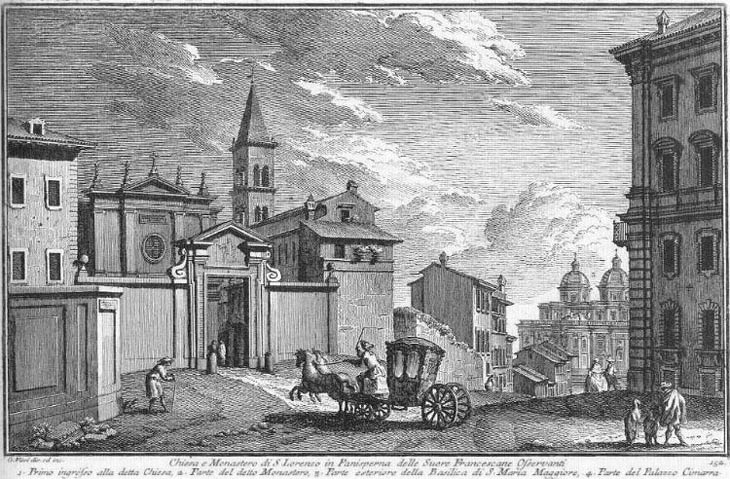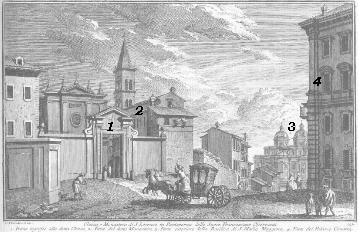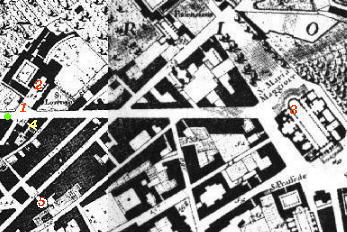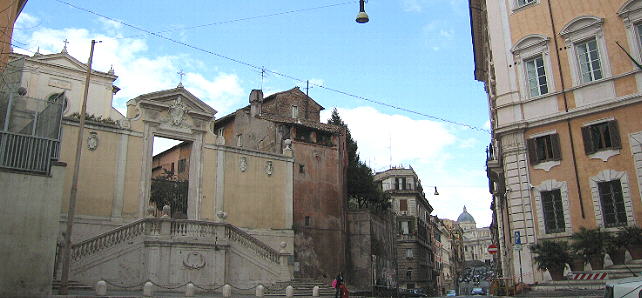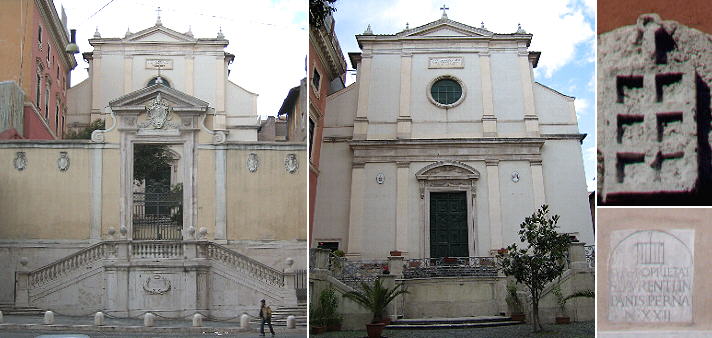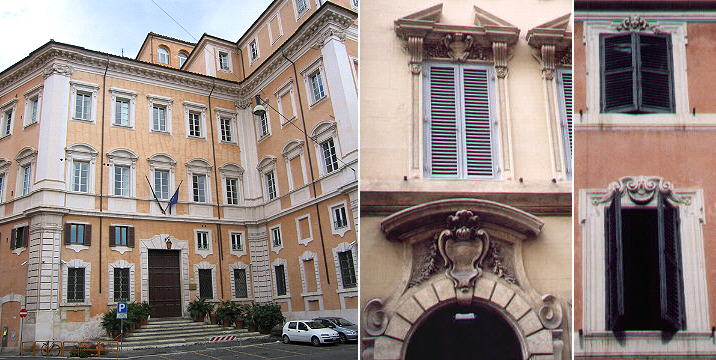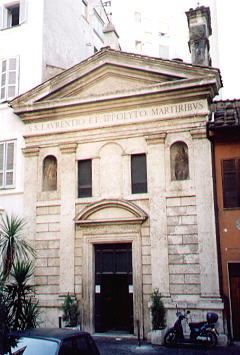  S. Lorenzo in Panisperna (Book 8) (Day 3) (Map A3) (Rione Monti)
In this page:
Viminale is the least known of the seven hills of Rome. For Italians
Viminale is the synonym for the Ministry for Interiors Affairs or the Police,
but Viminale is the hill between Quirinale and Esquiline and Via Panisperna
is the straight road which links these two hills ascending the Viminale.
The church of S. Lorenzo is at the highest point of Viminale. The view is taken from the green dot in the 1748 map below.
In the description below the plate Vasi made reference to: 1) First entrance to the church; 2) Part of the monastery; 3) S. Maria Maggiore;
4) Palazzo Cimarra. 3) is shown in another page. The small map shows also 5) S. Lorenzo in Fonte.
The bell tower and the beggar are not there, but apart from that little has changed and the view over S. Maria Maggiore has been preserved.
Built in very ancient times on the spot of S. Lorenzo's martyrdom, the church has been the object of too many restorations: the last one by Leo XIII. The monastery and several houses belonging to it are marked with a gridiron, a reminder of the cruel way St. Lawrence was put to death.
The simple but elegant Palazzo Cimarra offers to the happy few who
can afford a flat there a striking view over the other six hills of Rome. It is not the only interesting palace in an area
which at first sight seems rather dull. There are several buildings of the XVII/XVIIIth centuries which have fine stucco decoration.
S. Lorenzo was imprisoned in the dungeon of the house of Ippolito a Roman centurion.
In the dungeon there was a little spring (fonte) of water, which was used by S. Lorenzo to baptize another prisoner, a
blind man who recovered his sight. The miracle convinced Ippolito to be baptized too and for this he was put to death. The church, built on the dungeon, is dedicated to both Lorenzo and Ippolito.
The ashes of S. Lorenzo were buried in S. Lorenzo fuori le Mura.
Next plate in Book 8: S. Silvestro in Capite Next step in Day 3 itinerary: Porta S. Lorenzo Next step in your tour of Rione Monti: Chiesa e Monastero dei SS. Domenico e Sisto Go
to |
All images © 1999 - 2003 by Roberto Piperno. Write to romapip@quipo.it
